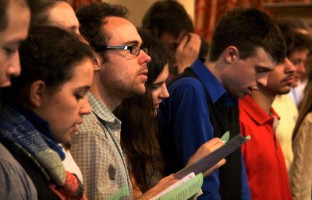Trusting a new song: How to introduce music for worship
In congregational song a fluid tension exists between known and unknown music. A well-loved song brings to mind our personal faith, our faith family, personal joys, and personal sorrows. Singing it gives us confidence: we know from experience that the song will “go well” in worship.
But there are new songs to sing, songs in a variety of genres and from a variety of traditions and cultures. Many new songs are waiting for us in new hymnbooks. These songs remain dormant until we sing them—until we take them from a fixed page and bring them to life.
But trying a new song can be a risky venture for leaders and congregations alike. We’re not sure what will happen. How do we worship leaders present new songs in ways that inspire trust? Here are some guidelines.





